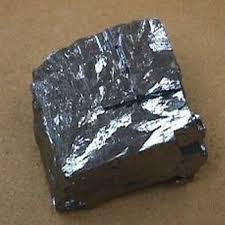Mechanized Castor Seed Cultivation and Export; The Feasibility Report.

Castor (Ricinus communis L.) is cultivated around the world because of the commercial importance of its oil. Castor seeds contains between 45%and 60% of oil that is rich in triglycerides, mainly riciolein.
Castor oil, produced from castor beans, has long been considered to be of important commercial value primarily for the manufacturing of soaps, lubricants, and coatings, among others.
Castor oil has long been used commercially as a highly renewable resource for the chemical industry. It is a vegetable oil obtained by pressing the seeds of the castor oil plant (Ricinus communis L.) that is mainly cultivated in Africa, South America, and India. Major castor oil-producing countries include Brazil, China, and India.
This oil is known to have been domesticated in Eastern Africa and was introduced to China from India approximately 1,400 years ago. India is a net exporter of castor oil, accounting for over 90% of castor oil exports, while the United States, European Union, and China are the major importers, accounting for 84% of imported castor oil.
Castor is one of the oldest cultivated crops; however, it contributes to only 0.15% of the vegetable oil produced in the world. The oil produced from this crop is considered to be of importance to the global specialty chemical industry because it is the only commercial source of a hydroxylated fatty acid.
Even though castor oil accounts for only 0.15% of the world production of vegetable oils, worldwide consumption of this commodity has increased more than 50% during the past 25 years, rising from approximately 400,000 tons in 1985 to 610,000 tons in 2010. On average, worldwide consumption of castor oil increased at a rate of 7.32 thousand tons per year.
In general, the current rate of castor oil production is not considered sufficient to meet the anticipated increase in demand.
Nigeria imports over N30 billion worth of castor oil every year despite having arable and fertile land, and climatic conditions suitable for its farming.
This report examines the financial viability of establishing a mechanized castor farm in Nigeria.
The farm would be one hundred and ten (110) hectares and one hundred (100) hectares would be used for cultivation while ten (10) hectares would be used for civil works and development. Castor is a seven (7) years crops and the maturity of the crop depends on the variety. Most of the improved cultivars mature in about five (5) – six (6) months after planting.
Generally, yield of any crop depends on factors like cultivar, soil type, irrigation, climate and cultural practice.
Table of Contents
EXECUTIVE SUMMARY 1.0 Business Overview 1.1 Description of the Business 1.2 Vision and Mission Statement 1.3 Business Objective 1.4 Critical Success Factor of the Business 1.5 Current Status of Business 1.6 Description of the Business Industry 1.7 Contribution to Local and National Economy 2.0 Agricultural Practice 2.1.0 Seedlings 2.1.1 Planting 2.1.2 Manures and Fertilizers 2.1.3 Weeding and Herbicides 2.1.4 Climate / Irrigation 2.1.5 Harvesting and Yield 2.1.6 Soil Type 2.1.7 Diseases and Pests 3. Marketing Plan 3.1 Description of products 3.2 Product Packaging and delivery 3.3 The Opportunity 3.4 Pricing Strategy 3.5 Target Market 3.6 Distribution and Delivery Strategy 3.7 Promotional Strategy 3.8 Competition 4. Production Plan 4.1 Description of the Location 4.2 Raw Materials 4.3 Production Equipment 4.4 Production Process 4.5 Production Cost 4.6 Stock Control Process 4.7 Pre-Operating activities and expenses 4.7.1 Operating Activities and Expenses 4.8 Project Implementation Schedule 5.0 Organizational and Management Plan 5.1 Ownership of the business 5.2 Profile of the promoters 5.3 Key Management Staff 5.3.2 Management Support Units 5.4 Details of salary schedule 6. Financial Plan 6.1 Financial Assumption 6.2 Startup Capital Estimation 6.3 Source of Capital 6.4 Security of Loan 6.5 Loan Repayment Plan 6.6 Profit and Loss Statement 6.7 Cash flow Statement 6.8 Viability Analysis 7.0 Business Risk and mitigation factor 7.1 Business Risks 7.2 SWOT Analysis 8.0 Managing Export Operations
Project Specification:
Additional Info
Get this Report
Direct bank transfer
To order the report, Please do pay the sum of ₦50,000 into
Account Name : Foraminifera Market Research Ltd
Account Number : 274 20 569 37
Account Name : Foraminifera Market Research Ltd
Account Number : 101 76 603 95
Account Name : Foraminifera Ventures
Account Number : 011 66 066 32
Make your payment directly into our bank account. Please use your Order ID as the payment reference. Your order will not be shipped until the funds have cleared in our account.
Instructions
After payment call us on 01 -29 52 413 / 08033782777 or email us at foraminiferamarketresearch@yahoo.com with the payment details. After payment confirmation, the soft copy of the report would be sent to you within 24 hours.



